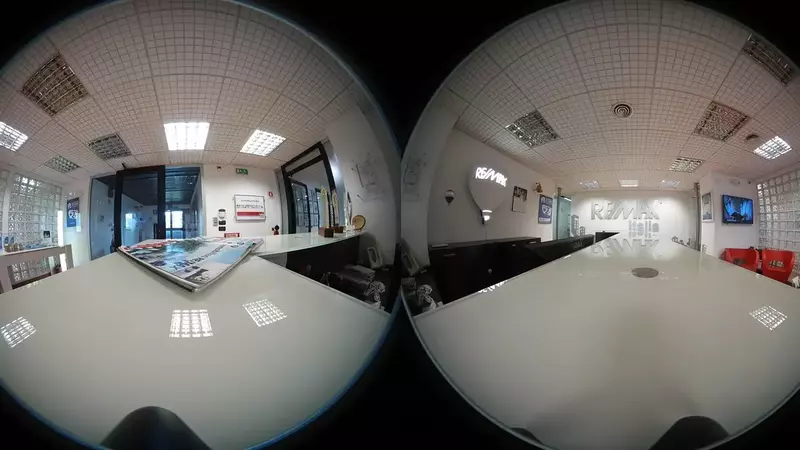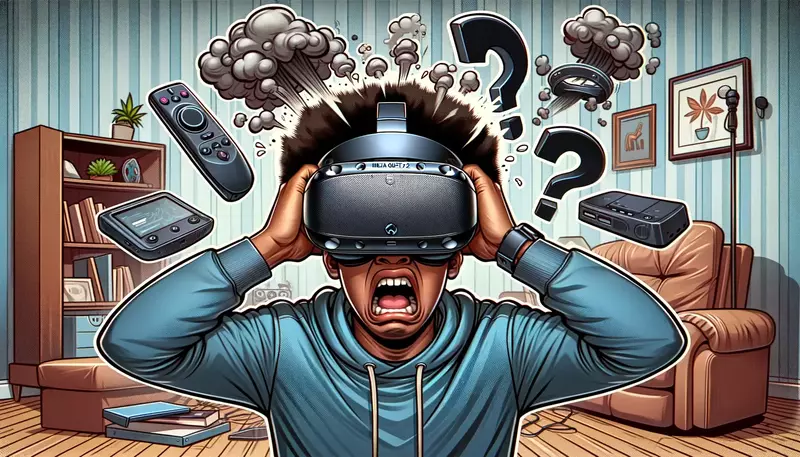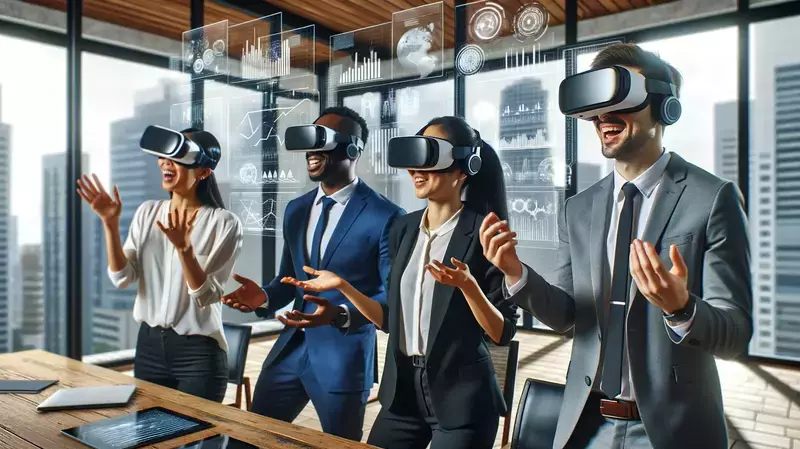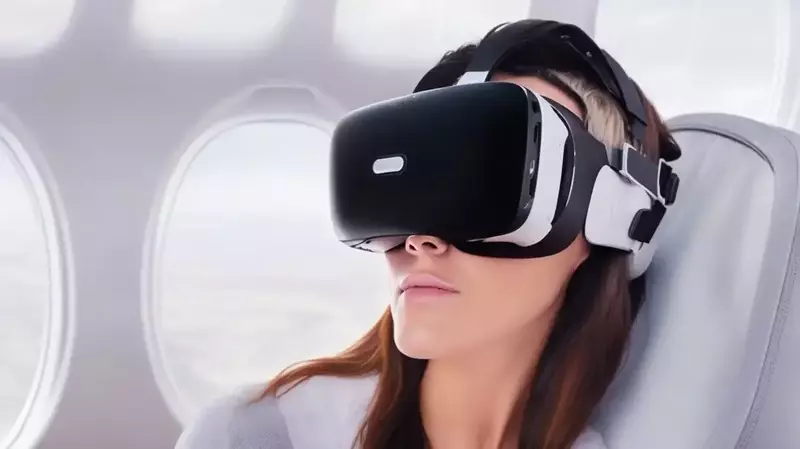This site contains affiliate links to products, and we may receive a commission for purchases made through these links.
This modern tech is revolutionizing how we experience both virtual and physical surroundings.
By delving into the world of passthrough technology in VR headsets, this blog post will explore its various applications and potential future developments. We will also see how front-facing cameras on these devices capture our surroundings to create seamless transitions between virtual reality (VR) and augmented reality (AR).
First, we’ll examine how front-facing cameras on these devices capture our surroundings to create seamless transitions between virtual reality (VR) and augmented reality (AR). Then, we’ll discuss some exciting gaming applications made possible by Meta’s Passthrough API and innovative titles like Resolution Games’ Spatial Ops.
Finally, what does the pass-through functionality of a virtual reality headset do for the future? We will explore how full-color high-definition passthrough could become mainstream as well as its convergence with see-through AR technologies. Stay tuned to learn more about this fascinating aspect of VR headsets!

Understanding Passthrough in Virtual Reality
Passthrough technology enables users to transition between VR and AR effortlessly by using the front-facing cameras on the headset to capture and display the real world environment within its view.
This technology utilizes front-facing cameras on the VR headset, capturing the real-world environment and displaying it within the headset’s view.
It is an essential component for interfacing with the Metaverse, combining elements from both AR and VR to create immersive experiences.
| Functionality | Description |
|---|---|
| Pass-Through VR Headsets | Virtual Reality headsets with pass-through functionality allow users to see the real world while wearing the headset. This is useful for situations where the user needs to take a break from VR or for using VR in a mixed-reality setting. |
| Mixed Reality | Mixed reality combines virtual and real-world environments, allowing virtual objects to interact with physical ones. Pass-through VR headsets can enable mixed reality by allowing users to see the real world while wearing the headset, which can enhance the immersive experience and create new opportunities for applications. |
| Safety and Comfort | Pass-through VR headsets can enhance safety and comfort by allowing users to take breaks from VR and reducing the risk of collisions with physical objects. It can also help to alleviate motion sickness by allowing users to see their real-world surroundings. |
| Gaming and Entertainment | Pass-through VR functionality can enhance gaming and entertainment experiences by allowing users to seamlessly switch between VR and real-world environments. It can also enable new types of games and applications, such as games that require users to move around in real-world spaces. |
| Augmented Reality Applications | Pass-through functionality can be used in Augmented Reality (AR) applications to enhance the user’s experience by providing contextual information and real-world objects that can be interacted with virtually. |
Front-facing Cameras Capture Real-world Environments
The key enabler of passthrough functionality in virtual reality headsets is their front-facing cameras. These cameras capture live video feeds of your surroundings, which can then be integrated into your VR experience as needed.
For example, if you need to grab a drink or answer a phone call while immersed in a game, you can simply activate passthrough mode without removing your headset – this enables you to see and interact with your physical environment while still wearing the device.
Seamless Switching Between VR and AR
- Mixed-reality experiences: With passthrough technology, developers can create applications that blend elements from both virtual worlds and real-life environments. This opens up new possibilities for gaming, training simulations, social interactions, design workspaces, and more.
- Safety features: Passthrough also serves as an important safety feature by allowing users to maintain awareness of their surroundings even when fully immersed in a virtual world – reducing risks associated with disorientation or accidents due to limited visibility outside the headset.
- Enhanced user experience: The ability to switch between VR and AR modes on-the-fly can greatly enhance the overall user experience, making it more immersive, interactive, and engaging. This also helps in reducing the barriers between virtual reality and everyday life.
Incorporating passthrough functionality into virtual reality headsets has opened up new avenues for exploration within the realms of gaming, social interaction, professional applications, and beyond.
As technology continues to advance rapidly in this field with companies like Meta, we can expect even more innovative uses for passthrough features that will further blur the lines between our physical world and digital spaces.
Grasping the significance of passthrough in VR is key to unlocking its potential for blending augmented and virtual realms. With this knowledge in hand, let us now explore how passthrough technology can be applied to gaming scenarios.
Passthrough functionality in virtual reality headsets allows users to seamlessly switch between VR and AR modes by utilizing front-facing cameras that capture real-world environments. This feature enhances the overall user experience, improves safety, and opens up new possibilities for gaming, training simulations, social interactions, design workspaces, and more. As technology continues to advance rapidly in this field with companies like Meta , we can expect even more innovative uses for passthrough features that will further blur the lines between our physical world and digital spaces.
Applications of Passthrough Technology in Gaming
The passthrough functionality has opened up new possibilities for gaming experiences that blend the virtual and real worlds.
With the release of Meta’s Passthrough API within their Quest Developer SDK, developers now have access to tools that enable them to create immersive applications specifically designed for augmented reality environments.
1. Meta’s Passthrough API Enables New Application Development
The introduction of Meta’s Passthrough API has allowed game developers to explore innovative ways of integrating AR elements into their VR games.
The Passthrough API enables a fluid transition between virtual and augmented reality, allowing players to interact with both simulated objects and their physical environment.
The potential applications are vast, ranging from educational experiences to interactive storytelling and beyond.
2. Resolution Games’ Spatial Ops: A Prime Example
- Spatial Ops: One noteworthy example utilizing passthrough technology is Resolution Games’ Spatial Ops, an experimental mixed-reality game developed exclusively for the Oculus Quest platform. In this futuristic training simulation, players must use their wits and physical agility to solve puzzles by manipulating holographic interfaces while navigating through a series of dynamic obstacles in the real world.
- Pioneering Mixed Reality Gameplay: By leveraging wireless headset technology like Oculus Quest 2’s passthrough feature, Spatial Ops offers an engaging gaming experience where players can move freely around their environment without being tethered by cables or restricted by limited tracking areas commonly associated with traditional VR setups.
- A Glimpse Into Future Possibilities: Spatial Ops serves as a testament to the potential of passthrough technology in gaming, showcasing how developers can create unique and captivating experiences that blur the lines between virtual and physical realities.
As more creators continue to explore the possibilities of Meta’s Passthrough API, there is potential for further innovations in mixed-reality gaming that could redefine what can be achieved.
The future of passthrough functionality in virtual reality headsets promises exciting new opportunities for gamers, explorers, and anyone interested in experiencing immersive digital worlds like never before.
The passthrough technology has opened up a range of possibilities for gaming applications, with Meta’s Passthrough API providing developers the tools to create immersive experiences.
Looking ahead, we can expect full-color high-definition passthrough functionality and convergence with see-through AR technologies becoming more mainstream in virtual reality headsets.
Virtual reality headsets provide a pass-through feature, enabling effortless transitioning between VR and AR modes, bringing forth potential for gaming scenarios that join the virtual with the real. Meta’s Passthrough API has enabled game developers to explore innovative ways of integrating AR elements into their VR games, as seen in Resolution Games’ Spatial Ops. This technology promises exciting new opportunities for gamers interested in experiencing immersive digital worlds like never before.
The Future of Pass-through Functionality in Virtual Reality Headsets
As the virtual reality landscape progresses, pass-through functionality is gaining increasing relevance, with full-color high-definition passthrough becoming a mainstay in consumer headsets such as Meta’s Oculus Quest 2 series.
With full-color high-definition passthrough making its way into mainstream retail headsets like Meta’s Oculus Quest 2 series, mixed-reality development becomes more accessible for developers worldwide.
1. Full-color High-definition Passthrough Becoming Mainstream
In recent years, advancements in technology have led to significant improvements in the quality and capabilities of VR headsets.
Recent advances in technology have enabled the development of full-color high-definition passthrough, providing users with an immersive experience that combines their real world and virtual environment.
This integration not only enhances user immersion but also opens up new possibilities for developers looking to create innovative applications that take advantage of both augmented reality (AR) and virtual reality (VR) technologies.
2. Convergence with See-through AR Technologies
Beyond gaming experiences, vision-based pass-through systems are being developed for various mobility tasks involving human-machine interaction scenarios where mobile robots are commanded using wearable VR headsets.
Researchers at institutions like University of Siegen are working on projects that explore how these systems can be utilized effectively within industrial settings.
- Mobility tasks: Vision-based pass-through systems can help facilitate communication between humans and machines during complex mobility tasks by providing a clear view of both the real-world environment and virtual overlays.
- Safety applications: By combining see-through AR technologies with pass-through functionality, safety features such as hazard detection or navigation assistance could become more effective within industrial or construction settings.
- Training and education: The convergence of pass-through VR and see-through AR technologies can lead to more immersive training experiences, allowing users to interact with virtual objects while still being aware of their real-world surroundings.
Ultimately, the integration of pass-through functionality in virtual reality headsets could lead us towards a unified device capable of delivering groundbreaking Metaverse experiences.
By seamlessly switching between passthrough AR and see-through AR functions when necessary, these devices have the potential to revolutionize how we interact with both digital and physical worlds alike.
Pass-through functionality in virtual reality headsets is becoming increasingly important, with full-color high-definition passthrough making its way into mainstream retail headsets. Pass-through integration of VR and AR can make for a more engaging experience, providing developers with the opportunity to create unique applications that leverage both techs. The convergence of pass-through VR and see-through AR technologies can lead to more immersive training experiences, effective safety features within industrial or construction settings, and ultimately revolutionize how we interact with digital and physical worlds alike.
FAQ
What Does Passthrough Functionality of a Virtual Reality Headset Do?
The passthrough functionality in a VR headset allows users to see their real-world environment while wearing the device. It uses front-facing cameras to capture the surroundings and displays them inside the headset, enabling seamless switching between virtual reality (VR) and augmented reality (AR). This feature is useful for various applications, such as gaming and exploration.
What Are the Functions of a VR Headset?
A VR headset primarily provides an immersive experience by creating a 360-degree visual environment that responds to user movements. Functions include head tracking, motion control, positional audio, haptic feedback, and sometimes hand or body tracking. These features enable users to interact with digital content in ways that simulate real-life experiences.
What Does the First True Functionality of a Virtual Reality Headset Do?
The first true functionality of a VR headset is providing an immersive visual experience by rendering computer-generated images based on the user’s perspective. The device tracks head movement using sensors like accelerometers or gyroscopes so that it can adjust visuals accordingly in real-time. This creates an illusion of being present within another world or simulated environment.
What Are the Key Components of a Virtual Reality Headset?
- Display: High-resolution screens provide detailed visuals
- Lenses: Optics focus images onto each eye separately
- Sensors: Track head position and orientation for accurate image rendering
- Haptic Feedback: Create tactile sensations through vibrations and force feedback
- User Interface: Incorporate buttons and controllers for interaction with digital content
Virtual reality headsets have become increasingly popular in recent years, with various types available, including VR, augmented reality (AR), and mixed reality (MR) headsets.
The passthrough API is a feature that is unique to some VR headsets, allowing users to switch between the real world and virtual environments seamlessly.
!! For more information about the different VR headsets on the market, check out this product specification list.
Final Thoughts
In brief, the pass-through capability of a VR headset enables users to transition effortlessly between reality and digital realms with the use of front cameras. This technology has opened up new possibilities for gaming and other applications, such as Meta’s Passthrough API and Resolution Games’ Spatial Ops.
The future of pass-through functionality looks promising with full-color high-definition becoming mainstream and convergence with see-through AR technologies. As VR continues to evolve, we can expect even more innovative uses for this technology.
If you’re interested in exploring the potential of pass-through technology further, check out Project META, which is dedicated to creating immersive experiences through cutting-edge VR/AR technologies.

Espen
Espen is the Director of PursuitMeta and has written extensively about Virtual Reality and VR Headsets for years. He is a consumer product expert and has personally tested VR Headsets for the last decade.




Leave a Reply